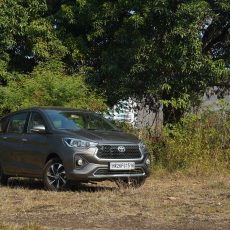The most radical iteration of the Hyundai Verna is here and we have driven it on the Delhi-Mumbai expressway.
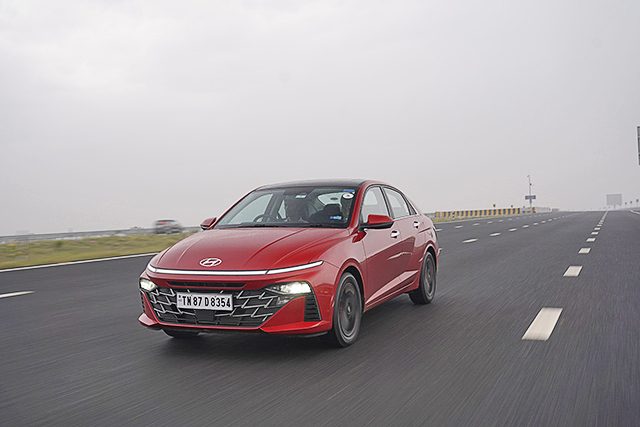
Story: Joshua Varghese
Photography: Sanjay Raikar
In its latest avatar, the Hyundai Verna is a completely new car. The design language, dimensions, specifications and features are fresh. The car itself is now placed in a premium spot in the market, a level above the its predecessor’s position. With a powerful engine on offer, the top-shelf Verna is also the most powerful sedan in its segment. Armed with such significant changes, the latest Verna deserved to be scrutinised further and the new Delhi-Mumbai highway was the venue for our first experience driving the top-end 1.5 TGDi model.
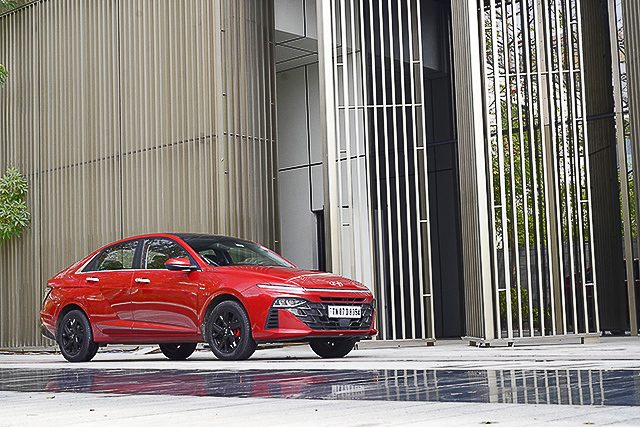
The styling of the new Verna is nothing like anything that came before it. The sedan body shape is the only thing this generation has in common with its predecessors. At 1,765 mm, this car is wider than before and at the front, an LED DRL strip spans the width of the bonnet, giving the new Verna a distinct, unique look. That is further complemented by the parametric grille and headlights which dominate the front bumper of the car. The sloping front extends into a profile that features sharp panels which bear a striking resemblance to the new Tucson but also do a good job of highlighting that this car has increased in length to 4,535 mm. The new design is rounded off in style with a fastback-inspired roofline that culminates in a rear that features intricate tail-lights along with a lighting element that runs the width of the car. The turbo-petrol variant of the Verna gets disc brakes all around along with 16-inch black wheels and red calipers (at the front).

Changes on the inside are also equally dramatic both visually and functionally. The first thing I noticed was the new two-spoke steering wheel, a first for Hyundai and a reasonable attempt at making the cabin sportier than ever. However, it is immediately evident that this is a cabin that serves comfort better than being explicitly sporty. A generous use of black plastic and leatherette add to the premium ambience of the interior but there is also a subtle hint of red to complete the performance-oriented makeover of the Verna. Infotainment is managed by a 10.25-inch, high-definition touchscreen that relays music through a suitably premium eight-speaker Bose sound system which is a boon to have if one enjoys good music while driving. I also liked how the screen was slightly tilted towards the driver because it furthers a sense of involvement when driving. By the way, paddle-shifters are exclusive to the TGDi DCT model.
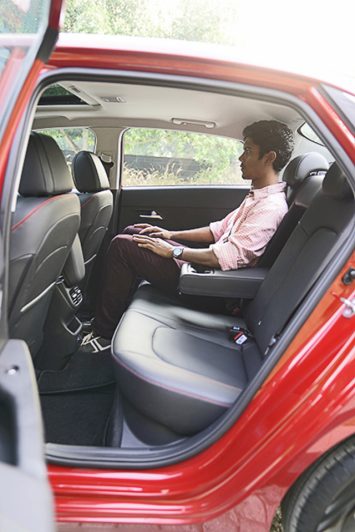
The 2,670-mm wheelbase has created a lot of room in the cabin; in both rows. The plush seats feel nice and the generous use of leatherette further improve the car’s premium appeal. With an electrically-adjustable (only fore/aft and recline) driver’s seat, a comfortable driving position is easy to find. At six-foot-one, there was enough room in the back for me after the driver’s seat had been set to my height. There is more shoulder room as well and great under-thigh support. I would even say that the Verna’s back seats are among the best in its segment. The boot is also fairly large and that rounds off this car’s ability to be the perfect choice for a small family. There is barely any cabin noise and the NVH levels are admirable.
The choice of drivetrains include a 1.5-litre MPi petrol engine that develops 115 hp and 144 Nm of peak torque. Customers can avail this engine with a choice of transmissions including a six-speed manual or a CVT. We drove the top-shelf variant and they come equipped with the 1.5-litre TGDi engine that develops 160 hp and 253 Nm of peak torque. Which means that on paper, this is the most powerful sedan in its segment. This engine could be mated to either a six-speed manual or a seven-speed DCT and yours truly drove the car with the latter. The driving modes on offer include Eco, Normal and Sport. Since we were in Gurugram to sample the car on the new Delhi-Bombay expressway, it made sense to start with Normal.

The Verna lives up to expectations in that mode because the power delivery is smooth and linear as is the fuelling. The TGDi engine allowed me to comfortably hold 120 km/h on the highway with the torque always on standby to execute a quick overtake. When switched into Sport mode, the noticeable differences include a more positive, direct steering feel and more liberal use of the rev range in each gear. Unfortunately, on the arrow straight expressway, this was not something we could test to our satisfaction.
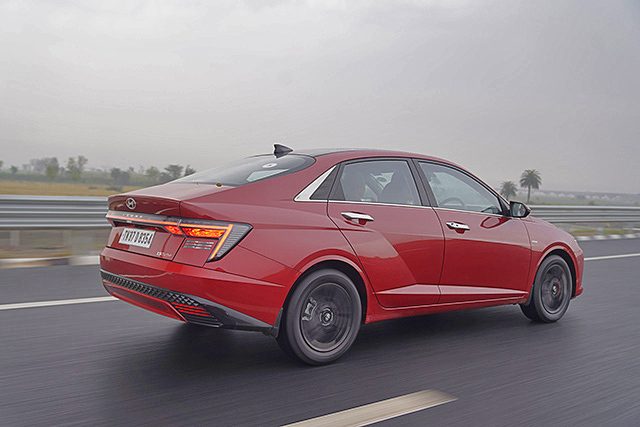
A MacPherson strut at the front and a torsion beam axle at the rear form the suspension department. Although it appears to be set up slightly on the firmer side, it returns a ride that is comfortable over our questionable road surfaces. Ample ground clearance ensures that speedbreakers are also not a concern. On the highway at 120 km/h, it was reassuring to see just how stable and pliant the Verna was. It retained composure and changed lanes at that speed with zero fuss or drama. As for spirited enthusiastic driving, the new Verna has what it takes to keep things interesting in a straight line but unfortunately, we did not get a chance to test its abilities around corners primarily because such corners were scarce on the expressway. So, we will just leave that for when we get the car for a road test.
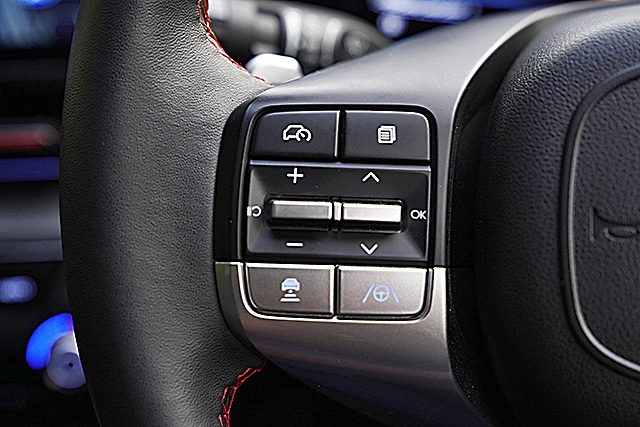
As with the new Tucson, this car also gets ADAS level two features including Avoidance Assist systems for forward collision and collisions caused due to blind spots. Other useful ones include lane-keeping assists and warnings, smart cruise control and high-beam assist among others. However, unlike the Tucson, these systems are not on by default. So, if one turns off the car and starts it again, any ADAS feature that was switched off previously will remain off.
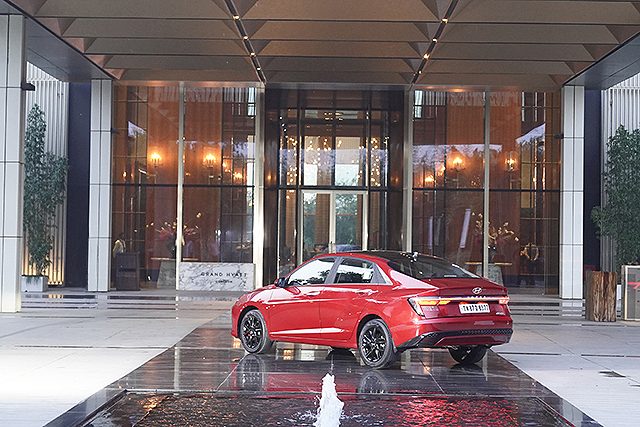
The new Hyundai Verna’s pricing starts from Rs 10.90 lakh (ex-showroom) which may be introductory but it significantly undercuts its rivals. The car you see in these pictures is the 1.5 Turbo Gdi DCT SX(O) variant and that goes up to Rs 17.38 lakh (ex-showroom), which is once again lower than its rivals. The new Verna is head and shoulders above the car it replaces in every regard. It has radical styling, a better-equipped interior, a long list of safety features and the most powerful engine in its segment. Of all of these virtues, what I liked best about the car was that it is easily the most comfortable and spacious in the segment.
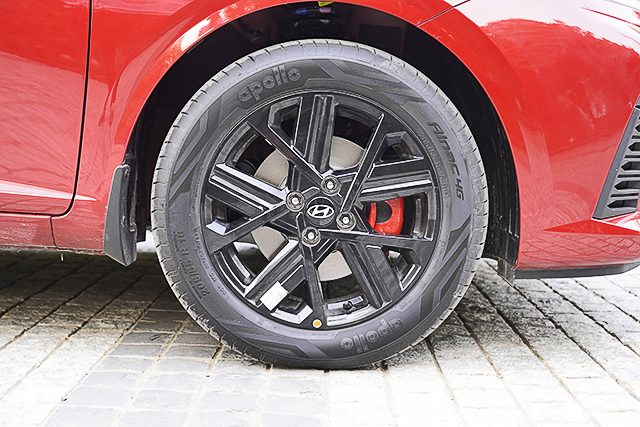
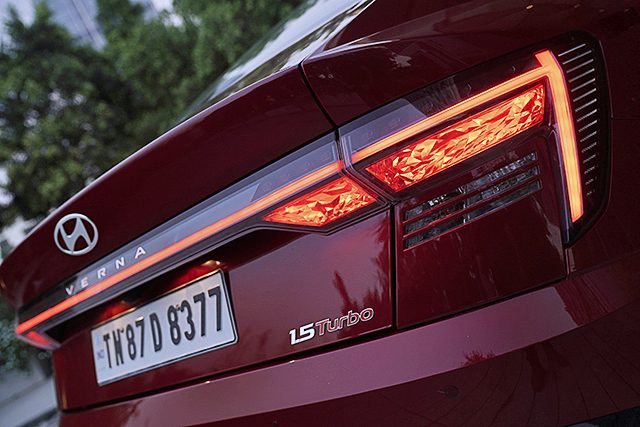
Full video review here:
Also Read: Lamborghini Urus Performante First Drive Review




